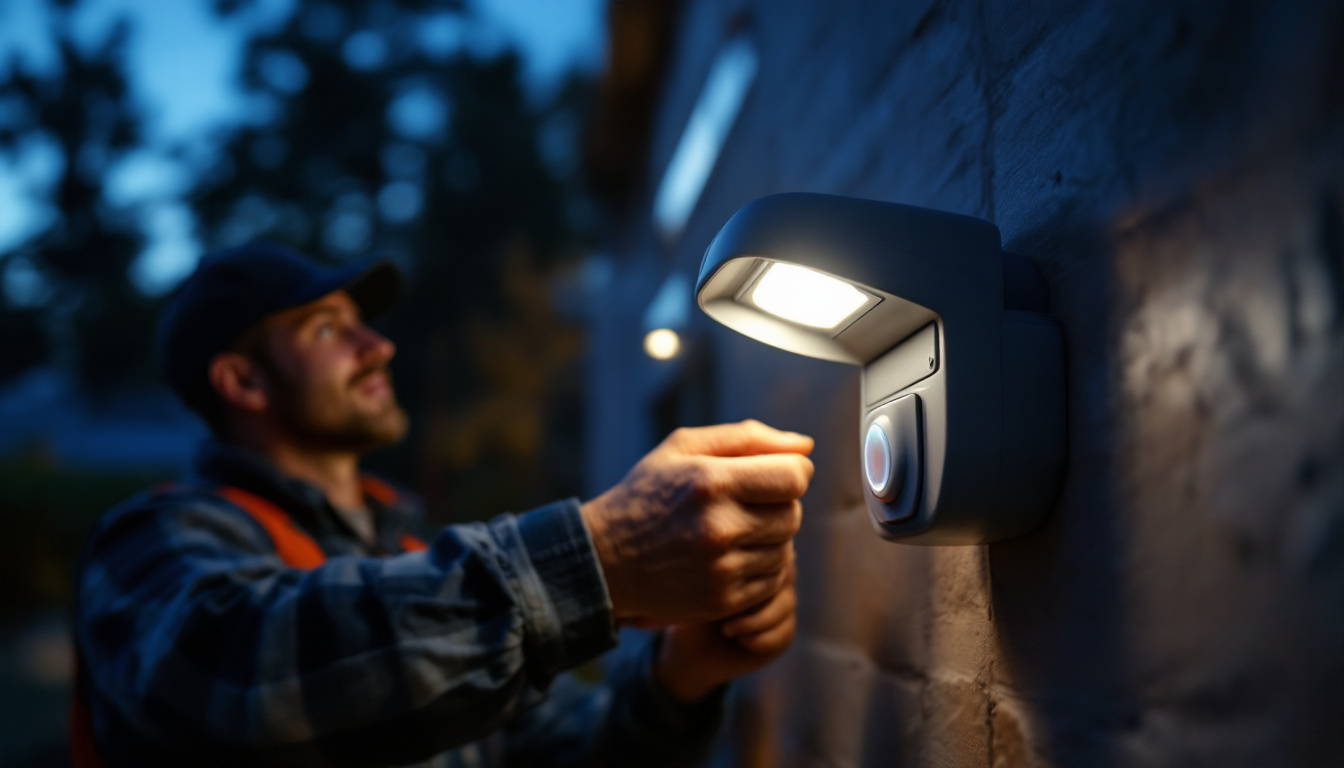
As the demand for energy-efficient and aesthetically pleasing lighting solutions continues to rise, lighting contractors play a pivotal role in ensuring that installations meet both functional and aesthetic needs. Understanding the intricacies of electricity outlets is essential for these professionals. This article delves into expert advice tailored specifically for lighting contractors, covering everything from installation best practices to safety considerations.
Electricity outlets, also known as receptacles, are critical components in any electrical installation. They provide the necessary interface for connecting lighting fixtures and other electrical devices to the power supply. For lighting contractors, a comprehensive understanding of the different types of outlets and their applications is crucial.
There are several types of outlets available, each designed for specific uses. The most common types include standard duplex outlets, GFCI (Ground Fault Circuit Interrupter) outlets, and AFCI (Arc Fault Circuit Interrupter) outlets. Standard duplex outlets are suitable for general lighting and power needs, while GFCI outlets are essential in areas prone to moisture, such as bathrooms and kitchens, to prevent electrical shocks.
AFCI outlets, on the other hand, are designed to protect against electrical fires caused by arcing faults. Understanding the differences between these outlets can help contractors choose the right type for their projects, ensuring safety and compliance with local codes. Additionally, there are specialty outlets, such as USB outlets that allow for direct charging of devices without the need for an adapter, and smart outlets that can be controlled remotely, adding convenience and energy efficiency to modern homes.
Proper outlet placement is vital for both functionality and aesthetics. Lighting contractors must consider the layout of the space and the intended use of each area when determining outlet locations. For instance, in living rooms and bedrooms, outlets should be strategically placed to accommodate floor lamps, table lamps, and other lighting fixtures without creating unsightly cord runs.
In commercial spaces, outlet placement may need to accommodate various lighting designs and configurations. Contractors should also be mindful of the height at which outlets are installed, ensuring they are accessible yet unobtrusive. Adhering to the National Electrical Code (NEC) guidelines can help ensure compliance and safety. Furthermore, it is important to consider the future needs of the space; for example, installing additional outlets in areas where technology is likely to evolve can prevent the need for costly retrofitting later. Incorporating flexible outlet designs that allow for easy access and adaptability can enhance the overall functionality of the space, making it more user-friendly and efficient.
Installing electricity outlets requires a blend of technical skill and adherence to safety standards. Lighting contractors must be well-versed in the best practices to ensure a successful installation that meets client expectations. This involves not only understanding the technical aspects of electrical work but also being aware of local codes and regulations that govern electrical installations. Staying updated on these regulations is essential, as they can vary significantly from one region to another and may impact the overall safety and legality of the installation.
Before beginning any installation, it is essential to gather the necessary tools and materials. Basic tools include a voltage tester, wire strippers, screwdrivers, and a drill. Additionally, contractors should have the appropriate outlet boxes, wiring, and connectors on hand. It is also advisable to include safety gear such as gloves and goggles to protect against potential hazards during the installation process.
Using high-quality materials not only enhances the longevity of the installation but also minimizes the risk of future issues. For instance, selecting outlets with a robust design can withstand frequent use, particularly in high-traffic areas. Furthermore, investing in surge protectors or GFCI (Ground Fault Circuit Interrupter) outlets can provide additional safety features, protecting both the electrical system and the users from unexpected surges or electrical shocks. These considerations are particularly important in areas prone to moisture, such as kitchens and bathrooms, where the risk of electrical hazards is heightened.
Proper wiring techniques are fundamental to a safe and efficient installation. Contractors should ensure that they are familiar with the color coding of wires: black or red for hot, white for neutral, and green or bare for ground. Following these color codes helps prevent errors that could lead to electrical hazards. Additionally, understanding the importance of wire gauge is crucial; using the correct gauge ensures that the wiring can handle the electrical load without overheating, which is vital for maintaining safety and efficiency in the installation.
When connecting wires to the outlet, it is crucial to make secure connections. Loose wires can cause arcing, leading to overheating and potential fires. Using wire nuts or terminal screws correctly ensures that connections remain tight and secure over time. Moreover, it is beneficial to periodically inspect and test outlets after installation to ensure they are functioning correctly. This proactive approach can help identify any issues early on, preventing costly repairs and ensuring the safety of the electrical system for years to come. Additionally, labeling the circuits in the electrical panel can aid in troubleshooting and maintenance, providing clarity for future work or inspections.
Safety is paramount in any electrical work, and lighting contractors must prioritize it during every project. Understanding the potential hazards and implementing safety measures can prevent accidents and ensure a safe working environment.
Wearing appropriate personal protective equipment (PPE) is essential for any contractor working with electricity. This includes safety glasses to protect the eyes from debris, gloves to prevent electrical shocks, and hard hats in environments where overhead hazards may exist.
Additionally, contractors should ensure that their work area is free from clutter and hazards. Keeping tools organized and ensuring that electrical components are stored safely can reduce the risk of accidents. Regular inspections of PPE for wear and tear are also crucial; damaged equipment can compromise safety and lead to serious injuries. Moreover, training sessions on the proper use of PPE can enhance awareness and compliance among workers, fostering a culture of safety on the job site.
Each region has specific electrical codes and regulations that contractors must adhere to. Familiarity with these codes is not only a legal requirement but also a best practice for ensuring safety and reliability in electrical installations.
Contractors should regularly review local codes and updates to ensure compliance. This knowledge not only protects the contractor but also instills confidence in clients regarding the safety and quality of the work performed. Engaging with local regulatory bodies or attending workshops can provide valuable insights into any changes in legislation. Additionally, maintaining documentation of compliance can serve as a safeguard for contractors, demonstrating their commitment to safety and professionalism in their work.
Building strong relationships with clients is essential for lighting contractors. Effective communication and understanding client needs can lead to successful projects and repeat business.
Adopting a consultative approach can significantly enhance client relationships. This involves actively listening to clients’ needs and preferences, providing expert advice, and offering tailored solutions. By understanding the client’s vision, contractors can recommend appropriate lighting solutions that align with their expectations.
Moreover, educating clients about the different types of outlets and their benefits can empower them to make informed decisions. Providing insights into energy efficiency and safety can also enhance the contractor-client relationship, positioning the contractor as a trusted advisor.
Offering follow-up services can further strengthen client relationships. After completing a project, contractors should check in with clients to ensure satisfaction and address any concerns. This proactive approach demonstrates commitment to quality and customer service.
Additionally, providing maintenance services or tips on how to care for their lighting fixtures can enhance the overall client experience. Clients are more likely to recommend contractors who offer exceptional service and support beyond the initial installation.
The lighting industry is constantly evolving, with new technologies and trends emerging regularly. Staying updated with these changes is crucial for lighting contractors to remain competitive and provide the best solutions for their clients.
Advancements in technology, such as smart lighting systems and energy-efficient LED fixtures, are transforming the way lighting is designed and installed. Contractors should familiarize themselves with these technologies to offer innovative solutions that meet modern demands.
Smart lighting systems, for instance, allow for remote control and automation, providing convenience and energy savings. By integrating these technologies into their offerings, contractors can appeal to a broader range of clients and enhance project value.
Participating in continuing education and training programs is essential for staying current in the industry. Many organizations offer workshops, seminars, and online courses focused on the latest trends and best practices in lighting installation.
Investing time in professional development not only enhances skills but also demonstrates a commitment to excellence. Clients are more likely to choose contractors who actively seek to improve their knowledge and expertise in the field.
In conclusion, understanding electricity outlets and their installation is vital for lighting contractors. By adhering to best practices, prioritizing safety, and fostering strong client relationships, contractors can ensure successful projects and build a reputation for quality work.
Staying informed about industry trends and technologies will further enhance a contractor’s ability to meet client needs and expectations. As the lighting industry continues to evolve, those who adapt and embrace change will thrive in this competitive landscape.
Ready to elevate your lighting projects with the highest quality products? Look no further than LumenWholesale, where we provide lighting contractors with spec-grade lighting products at unbeatable wholesale prices. Say goodbye to local distributor markups and hello to our extensive selection that meets rigorous industry standards. With LumenWholesale, you’ll enjoy the convenience of bulk buying with free shipping, ensuring you get the best value without any hidden fees. Make your next project shine with reliability and performance by choosing Wholesale Lighting at the Best Value. Experience the LumenWholesale difference today!

Discover how lighting contractors are transforming outdoor spaces with sensor lights, featuring real-world success stories that highlight innovation, energy efficiency, and enhanced security.

Discover the ins and outs of outdoor solar light bulbs from a lighting contractor’s perspective.

Discover essential tips to avoid costly mistakes with LED Tube T8 lighting projects.

Illuminate your projects with our comprehensive guide on residential garage lighting ideas, tailored specifically for lighting contractors.